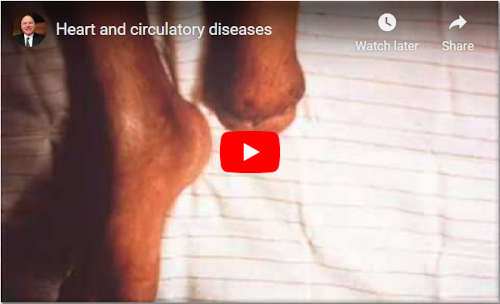
How smoking destroys blood circulation
True or False? Following the fracture of any bone within the human body the average length of time for a non-smoker to form 1 cm of new bone is 69.6 days as compared with 89.4 days for smokers. True, but why?
Here's a tiny sampling of links to medical studies concluding that smoking makes the blood content and/or circulatory systems of smokers lousy tools for healing:
- Soft tissue healing - Unfallchirurg 2002 Jan;105(1):76-81
- Fracture healing - 2001 Jan;32(1):61-5
- Fracture healing - Ann Chir Gynaecol 1993;82(4):254-62
- Fracture healing - Clin Orthop 1999 Aug;(365):184-200
- Wound healing - Tex Dent J 1994 Jun;111(6):21-3
- Early wrinkling - Br J Dermatol 2002 Apr;146(4):588-94
- Hearing loss - J Occup Environ Med 2000 Nov;42(11):1045-9
When we think of the damage being done to our body by smoking we tend to focus on our lungs. It's natural to do so. We can hear the wheezing, feel the cough and actually sense the gradual deterioration occurring inside. But if we're going to worry or be concerned based upon the magnitude or size of the health risk we face, then our greatest concern should be on the damage smoking inflicts upon our body's blood flow systems. Yes, smoking related circulatory disease kills far more smokers than lung cancer and the damage started with that very first puff.
Blood is a vehicle for delivering oxygen and nutrients to our body's tissues and organs. Without it they die. Our blood vessels (our circulatory system) are blood piping highways. The inside of each healthy blood vessel is coated with a thin Teflon like layer of cells that ensure smooth blood flow. Carbon monoxide from smoking or second-hand smoke damages this important layer of cells, allowing fats and plaque to stick to vessel walls. Nicotine then performs a double whammy of sorts.
First, each time new nicotine arrives in our brain it causes the body to activate its fight or flight stress defenses. This in turn causes the immediate release of stored fats into the bloodstream, fats intended to be used to provide the instant energy needed to either fight or flee the saber tooth tiger. But there is no tiger
The extra food we consumed during our big meals each day was converted to fat and stored. It was then pumped back into our bloodstream with each new puff of nicotine. It's how we were able to skip meals and what causes many of us to experience wild blood sugar swings when trying to quit. In fact, many of the symptoms of withdrawal - like an inability to concentrate - are due to nicotine no longer feeding us while we continue to skip meals.
We don't need to eat more food in order to avoid extreme blood sugar fluctuations when quitting. We need to learn to spread our normal daily calorie intake out more evenly over the entire day. We need to learn to once again feed ourselves.
The heavy blasts of stored fats released by nicotine stick to vessel walls damaged by toxic carbon monoxide. Sound bad? It gets worse. We've recently learned that nicotine itself, inside our vessels, somehow causes the growth of new blood vessels (vascularization) that then provides a rich supply of oxygen and nutrients to the fats and plaques that have stuck to damaged vessel walls. This internal nicotine vascularization (vessels within vessels) hardens a smoker's arteries and veins and further accelerates their narrowing and clogging.
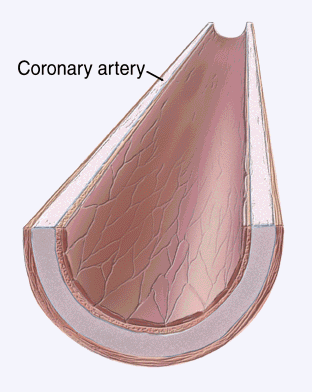 We each have a rough sense of the damage we've done to our lungs but what degree of clogging has already occurred inside our blood vessels? How long do we have before our coronary arteries - that supply life giving oxygen and nutrients to our heart muscle - become 100% clogged? When it happens it's called a heart attack and the portion of the heart muscle that receives oxygen from a particular coronary artery will quickly suffocate and die. How long do we have before our carotid arteries - supplying life giving oxygen and nutrients to our brain - become 100% clogged? When it happens it's called a stroke and the portion of the brain serviced by the artery suffocates and dies.
We each have a rough sense of the damage we've done to our lungs but what degree of clogging has already occurred inside our blood vessels? How long do we have before our coronary arteries - that supply life giving oxygen and nutrients to our heart muscle - become 100% clogged? When it happens it's called a heart attack and the portion of the heart muscle that receives oxygen from a particular coronary artery will quickly suffocate and die. How long do we have before our carotid arteries - supplying life giving oxygen and nutrients to our brain - become 100% clogged? When it happens it's called a stroke and the portion of the brain serviced by the artery suffocates and dies.
The damage being done isn't just to the vessels supplying blood to our heart and brain. It's occurring, to one degree or another, inside every vessel in a smoker's body. It affects everything from blood vessels associated with hearing, to the skin's blood supply that shows itself in wrinkles, early aging, hair loss and tooth loss. Below are links to images showing varying degrees of artery clogging, followed by links that aid in understanding our body's circulatory system.
How close are your body's tissues and organs to losing their blood and oxygen supply? If curious, ask your physician to listen to your blood flow and tell you how it sounds, or to conduct other more detailed tests or exams.
Joel explains how smoking destroys blood flow
What has smoking ever so gradually done to your arteries?
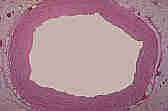
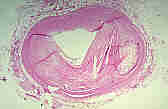
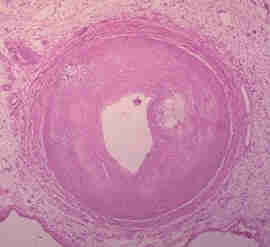

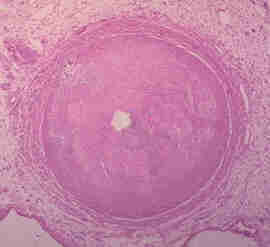
What do a 32 year-old smoker's arteries look like?
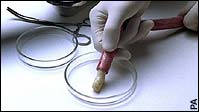
How the Heart Works & How Smoking Kills It
How your heart gets fed and nourished
Heart feeding tube diseases
Angioplasty
Bypass surgery
Heart attack
Related WhyQuit Articles
"Smoking and Circulation""
by Joel Spitzer, Cessation Educator
"How will smoking kill you?"
by John R. Polito, Cessation Educator
"A Heart-Loving-Heart"
by Dr. Prithwish Banerjee
Share this article with friends & loved ones
Knowledge is a Quitting Method

